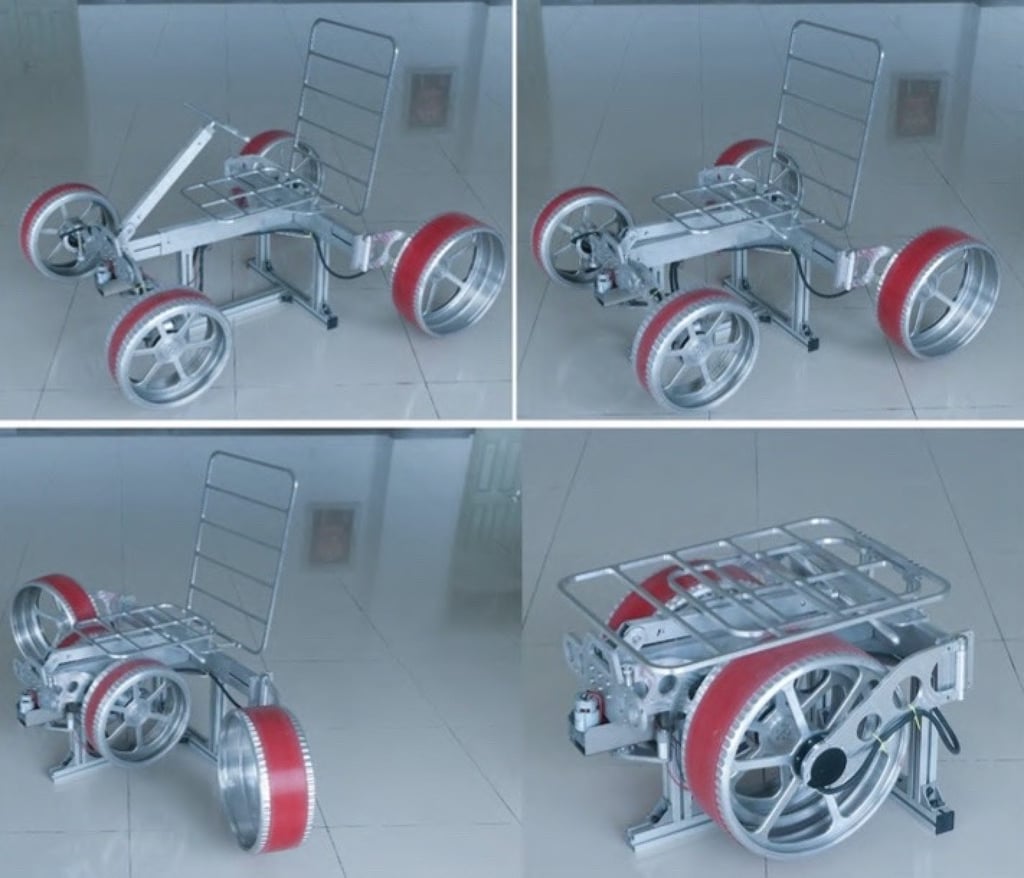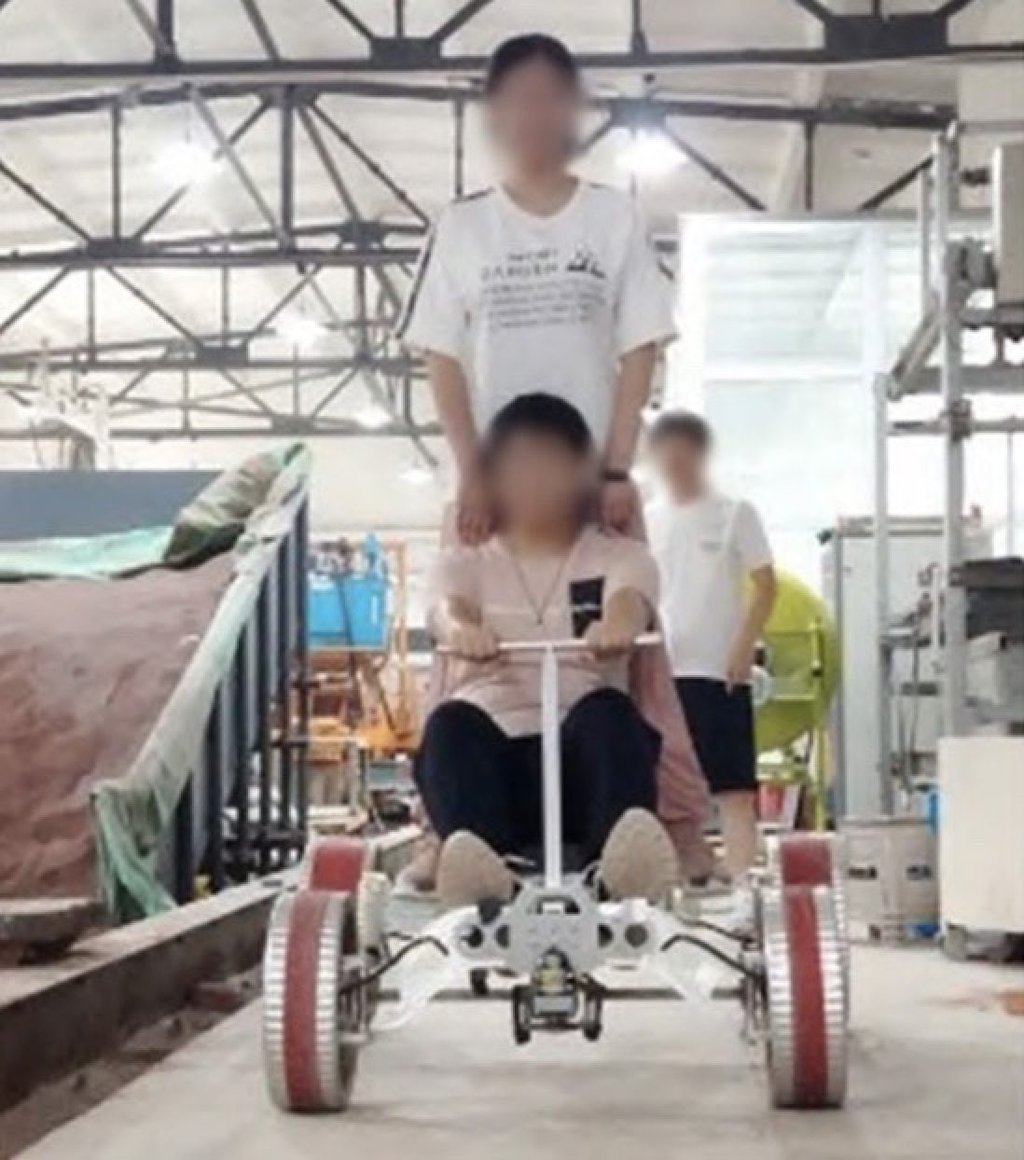Could this folding buggy be destined for China’s future lunar base?
- The Cubic Emergency Lunar Vehicle of China can be folded and tucked into the back of a regular roving vehicle
- CELV can carry one person seated in the front while a second stands at the back and can travel up to 10km/h on the moon’s surface, say researchers


During performance tests, the Cubic Emergency Lunar Vehicle of China (CELV), rolled over 10cm (4 inch)-high obstacles and climbed an incline up to 20 degrees, they reported in the March issue of the Chinese-language journal Optics and Precision Engineering.
CELV, which is all-metal and nearly 2m (6.5 feet) long when unfolded, carried two people weighing a total 130kg during the tests. One sat in the front seat and the other stood on a pedal at the back.

The vehicle is designed to hold a 90kg payload on the lunar surface, equal to about 540kg on Earth where the gravity is around six times that on the moon.
CELV was small, lightweight and very flexible, the researchers said. “Astronauts only need to pull or rotate certain parts to expand it, while no assembly or major adjustment is involved in the process,” they wrote in the paper.